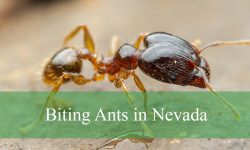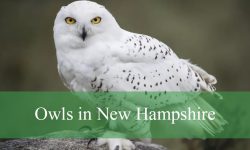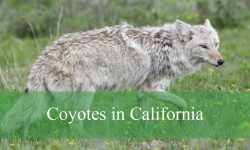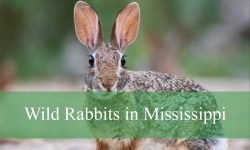Falcons have long fascinated bird enthusiasts and nature lovers alike. Their speed, precision, and striking appearance make them one of the most admired raptors in the wild. In Texas, a state rich in diverse ecosystems, falcons play an essential role in maintaining balance in the food chain. Beyond their iconic dives and aerial acrobatics lies a complex and secretive life full of fascinating behaviors, seasonal journeys, and survival strategies.
This article delves deep into the secret lives of falcons in Texas, exploring their migration patterns, hunting techniques, and much more.
Understanding Falcons in Texas
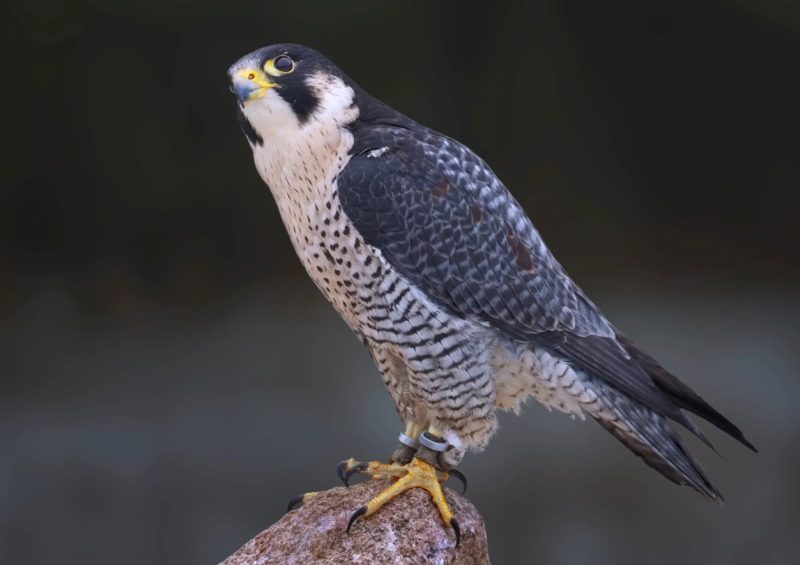
Texas is home to several falcon species, including the well-known Peregrine Falcon, the American Kestrel, and the Prairie Falcon. These birds of prey are uniquely adapted to thrive in the state’s diverse environments, ranging from deserts and prairies to urban landscapes and coastal regions. Their presence across Texas reflects both the rich biodiversity of the state and the critical ecological niche falcons occupy as top aerial predators.
Falcons are distinguished by their long, pointed wings and streamlined bodies, designed for incredible speed and maneuverability. The Peregrine Falcon, for instance, is famously the fastest bird on the planet, capable of reaching speeds exceeding 240 miles per hour during its hunting stoop (dive). In Texas, falcons have adapted to the specific climates and prey available, influencing their behavior and lifestyle in ways that are often hidden from casual observers.
Migration Patterns of Falcons in Texas
One of the most intriguing aspects of falcon life in Texas is their migration. Unlike some birds that make straightforward north-south journeys, falcon migration is a complex phenomenon influenced by many factors including climate, prey availability, and breeding needs.
During the fall and spring seasons, many falcons pass through Texas as part of their longer migratory routes. Peregrine Falcons, for example, breed in the northern parts of North America and Alaska, traveling thousands of miles to winter in Central and South America. Texas lies along a vital migratory corridor, offering crucial stopover sites where these birds rest and refuel. The timing of their arrival and departure is finely tuned to the availability of prey species, which also fluctuate seasonally.
American Kestrels, being smaller and more adaptable, exhibit a range of migratory behaviors. Some individuals are year-round residents, particularly in southern Texas, while others migrate southward during colder months. This variability within the species highlights how local environmental conditions can influence migration strategies.
Migration is not only a physical journey but also a time of heightened risk. Falcons face challenges such as habitat loss, weather extremes, and human disturbances during these travels. The survival of migratory falcons depends heavily on the availability of safe habitats like wetlands, open fields, and cliffs, many of which Texas fortunately provides.
Hunting Techniques and Feeding Behavior
The hunting prowess of falcons is legendary, and Texas falcons are no exception. Their hunting techniques reflect a combination of evolutionary adaptations and learned behaviors tailored to the prey and environments found in the state.
Peregrine Falcons are master hunters of the skies. They often soar high above open fields or coastlines, scanning for birds like pigeons, doves, and waterfowl. Once they spot their target, they execute a spectacular stoop, folding their wings and plunging at astonishing speeds to strike with tremendous force. This high-speed attack usually incapacitates prey instantly, a testament to the falcon’s precise control and power.
American Kestrels employ a different hunting style that suits their smaller size and the types of prey available. These falcons often hunt from perches or hover briefly in place, watching for insects, small mammals, or reptiles. Their diet in Texas can be surprisingly varied, including grasshoppers, dragonflies, lizards, and even small birds. This opportunistic feeding behavior enables kestrels to survive in both rural and urban settings.
Prairie Falcons, more common in western Texas, rely on speed and endurance to chase down larger prey such as ground squirrels and rabbits. Their hunting often involves rapid chases close to the ground, taking advantage of the open prairie landscape. These falcons are less reliant on stooping dives compared to Peregrines but compensate with agility and persistence.
Hunting success also depends on environmental factors like wind conditions, time of day, and prey behavior. Falcons in Texas have been observed to adjust their hunting times, often favoring early morning or late afternoon when prey is more active or vulnerable. The interaction between falcon and prey is a constant evolutionary dance, pushing both sides to adapt continually.
Breeding and Nesting Habits in Texas
Breeding is a critical phase in the life of falcons, and Texas offers a variety of habitats suitable for raising young. Falcons are typically solitary or monogamous during the breeding season, investing considerable energy in selecting and defending nesting sites.
Unlike many birds, falcons rarely build elaborate nests. Peregrine Falcons, for example, often use cliff ledges, tall buildings, or other elevated platforms to lay eggs directly on bare surfaces. Urban areas like Dallas and Houston have become surprising refuges for these raptors, where skyscrapers mimic natural cliff habitats and provide nesting opportunities.
The nesting season generally begins in late winter or early spring in Texas, timed to ensure that the young hatch when food is abundant. Falcons lay between three to five eggs, and both parents share incubation duties. The incubation period lasts around a month, during which the adults vigilantly protect the nest from predators and disturbances.
Once hatched, falcon chicks grow rapidly, relying heavily on their parents for food and protection. The young falcons, called eyases, remain in the nest for about six weeks before fledging. During this time, they learn vital survival skills through practice flights and hunting lessons provided by their parents.
Breeding success in Texas is influenced by factors such as weather, prey availability, and human activity. Conservation efforts have focused on protecting nesting sites and monitoring populations to ensure these magnificent birds continue to thrive.
Falcons’ Role in Texas Ecosystems
Falcons are apex aerial predators and play a crucial role in maintaining the ecological balance in Texas. By preying on various birds, insects, and small mammals, they help control populations that could otherwise reach pest levels.
The presence of falcons also indicates healthy ecosystems, as these birds require clean air, abundant prey, and suitable nesting sites. Their sensitivity to environmental changes makes them valuable bioindicators for conservationists and wildlife managers.
In urban environments, falcons contribute to natural pest control by hunting pigeons, starlings, and other birds often considered nuisances. This ecological service reduces the need for chemical pest control methods and promotes biodiversity even in human-dominated landscapes.
The interdependence between falcons and their prey creates complex food webs that ripple through the Texas landscape. Understanding these relationships offers insights into ecosystem health and highlights the importance of preserving habitats.
Challenges and Conservation Efforts
Despite their incredible adaptations and resilience, falcons in Texas face numerous challenges that threaten their survival. Habitat loss due to urban sprawl, agricultural expansion, and industrial development reduces available nesting and hunting grounds. Pollution, particularly pesticide use, can affect prey populations and cause toxic exposure.
Climate change is emerging as a significant threat, altering migration patterns and disrupting the timing of breeding and food availability. Extreme weather events can also destroy nests or directly harm falcon populations.
Human disturbance is another concern. Falcons nesting in urban areas may be vulnerable to disturbances from construction, noise, or direct interference. Illegal hunting and trapping, although less common today, still pose risks in some regions.
Conservation groups in Texas and nationwide have implemented various programs to protect falcons. These efforts include habitat preservation, nest box installations, monitoring and research projects, and public education campaigns. The success of these initiatives is evident in the gradual recovery of Peregrine Falcon populations, which were once severely depleted due to pesticide use.
Falconers and wildlife enthusiasts also play a role by promoting responsible practices and advocating for stronger protections. Collaboration between government agencies, non-profits, and local communities remains essential for the ongoing survival of these remarkable birds.
Fascinating Behaviors Beyond Hunting and Migration
Beyond their well-known hunting prowess and migratory journeys, falcons exhibit many intriguing behaviors that highlight their intelligence and adaptability.
Falcons use vocalizations to communicate, especially during the breeding season or when defending territory. Their calls range from sharp, high-pitched screams to softer, more subtle sounds used between mates or parents and chicks.
Territorial behavior is intense among falcons. Males and females work together to defend their nesting areas from intruders, sometimes engaging in aerial combat with rival birds. These aggressive encounters ensure access to resources critical for raising offspring.
Courtship displays also fascinate observers. Peregrine Falcons perform elaborate flight maneuvers, including rapid dives, swoops, and mutual chases that strengthen pair bonds and demonstrate fitness.
Falcons’ eyesight is among the sharpest in the animal kingdom, allowing them to spot prey from great distances. This keen vision, combined with fast reflexes, makes them nearly unbeatable hunters.
In urban settings, falcons have adapted to use human structures for roosting and nesting. They have been observed using parking garages, bridges, and communication towers as substitutes for natural cliffs, showing remarkable flexibility in their behavior.
The Cultural Significance of Falcons in Texas
Falcons hold a special place in the cultural and natural heritage of Texas. These birds have inspired indigenous folklore, symbolized freedom and power, and attracted bird watchers and photographers from around the world.
In many Native American traditions, falcons represent keen vision and swiftness, qualities admired and respected. The presence of falcons in the Texas sky connects modern inhabitants with centuries of natural history and cultural stories.
Modern conservation success stories have further elevated the falcon’s status as a symbol of hope and resilience. Educational programs featuring falcons help raise awareness about wildlife preservation and foster a deeper appreciation for the state’s natural wonders.
Falconry, the ancient art of training falcons for hunting, continues to be practiced in Texas by enthusiasts dedicated to preserving this unique human-bird relationship. This tradition links past and present, blending cultural heritage with wildlife stewardship.
Observing Falcons in Texas: What to Know
For those interested in witnessing falcons in their natural habitat, Texas offers many opportunities throughout the year. Timing, location, and understanding falcon behavior are key to successful observation.
Spring and fall migration periods are particularly good times to see falcons passing through the state. Coastal regions, river valleys, and open prairies are excellent vantage points. Urban centers like Austin, Dallas, and Houston may also provide glimpses of nesting Peregrine Falcons on skyscrapers.
Early mornings and late afternoons are the best times to observe hunting activity, as falcons tend to be most active during these hours. Binoculars or spotting scopes enhance the experience, allowing bird watchers to appreciate the falcons’ agility and grace from a safe distance.
Patience and quiet observation are essential, as falcons can be wary of human presence. Respecting their space and minimizing disturbance ensures these magnificent birds continue to thrive and inspire future generations.
Conclusion
The world of falcons in Texas reveals a fascinating blend of endurance, skill, and adaptability that often goes unnoticed. Their impressive migrations, expert hunting techniques, intricate breeding habits, and crucial contributions to the environment highlight their importance in the natural balance. By deepening our awareness and commitment to conserving these magnificent birds, we ensure that future generations can continue to witness and appreciate the remarkable legacy falcons bring to Texas’s diverse landscapes.
FAQs About Falcons in Texas
What species of falcons can be found in Texas?
Texas is home to several falcon species, including Peregrine Falcons, American Kestrels, and Prairie Falcons, each adapted to different habitats within the state.
When do falcons migrate through Texas?
Many falcons migrate during the fall and spring seasons, using Texas as a key stopover for rest and feeding on their long journeys between breeding and wintering grounds.
How do falcons hunt in Texas?
Falcons use various hunting techniques such as high-speed dives, hovering, and ground chases to catch prey like birds, insects, and small mammals depending on the species.
Where do falcons nest in Texas?
Falcons often nest on cliff ledges, tall buildings, and other elevated structures, with some species adapting well to urban environments in Texas cities.
What threats do falcons face in Texas?
Major threats include habitat loss, pesticide exposure, climate change, and human disturbances, which conservation efforts aim to mitigate.
How can I observe falcons safely in Texas?
The best way to observe falcons is from a distance using binoculars or scopes, especially during early mornings or late afternoons when they are most active.



